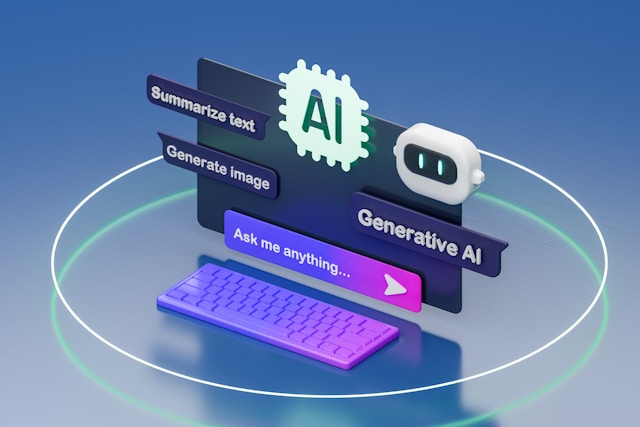Automating SMS campaigns and push notifications is key to effective and scalable customer communication. It allows sending messages at the optimal moment, precise targeting of recipients and immediate reaction to their actions. By combining the right technology and marketing strategy, companies increase user engagement, improve open and conversion rates, while saving time and resources. In the article below, we will discuss the main stages of implementing automated SMS and push campaigns, from data collection and content creation to result analysis and optimization.

Table of Contents
Introduction to automation of SMS and push campaigns
Automating SMS campaigns and push notifications replaces manual sends with hundreds of personalized messages dispatched instantly to different audience groups. Instead of copying and pasting content and addresses, the marketer defines rules and schedules, and the system handles delivery. This enables real-time reactions to events—e.g. notifying about an abandoned cart, reminding of an upcoming payment or sending a discount code immediately after first login.
The rise of mobile marketing makes SMS and push campaigns an increasingly important element of the sales funnel. SMS messages achieve nearly 98% deliverability, and push notifications can generate open rates several times higher than email. Automation harnesses this potential fully, eliminating delays and human error.
When implementing automation, organizations must also ensure GDPR compliance and adhere to electronic services regulations—especially for marketing SMS. Obtaining clear user consent and providing simple opt-out mechanisms are crucial for building trust and improving campaign effectiveness.
Collecting and segmenting recipients in real time
The foundation of every automated campaign is deep recipient insight and collecting data on their behaviors and preferences. Automation systems integrate with CRM, e-commerce and mobile apps to receive real-time signals—logins, purchases, app opens or clicks on previous notifications.
Based on these data, dynamic segments are created: daily active users, those who haven’t logged in for seven days, premium customers or price-comparison shoppers. Each segment can have its own automated communication path, and the system decides when and which messages to send. Real-time segmentation means the user doesn’t wait for a manual list refresh, and the company reaches them exactly when interest is highest.
By analyzing engagement metrics (opens, clicks, replies), segments can be continuously refined—a user who redeems a discount code moves to a “converting” segment and receives upsell offers, while one who ignores notifications is automatically shifted to a reactivation path with a friendlier tone.
Designing effective content and message timing
The key to successful SMS and push campaigns lies in content quality and precise send timing. Automation tools offer A/B tests for subject lines, message length or CTAs, enabling selection of variants with the best conversion rates. Lengthy, multi-sentence messages should be limited to concise calls to action, and rich push (with images or buttons) used when the app supports it.
Timing is equally critical. The system can automatically analyze the times of day when each recipient is most responsive and respect time zones to avoid late-night sends. Contextual triggers are also possible—a push notification sent immediately after an online order thanking the customer and suggesting related products.
Remember the 80/20 rule: 80% of messages should provide value (information, tips, exclusive offers) and 20% can be purely promotional. When automating, the marketer defines these proportions in workflows and lets the system randomly or sequentially choose message types to maintain engagement.
Integrating with other marketing channels
SMS and push automation doesn’t operate in isolation—it’s part of an omnichannel strategy. By integrating with email, social media or chatbots, brands can orchestrate multichannel journeys. For example, a cart abandonment might trigger an SMS reminder first, then an email, and if there’s no response, a push notification in the app.
Marketing automation platforms allow defining comprehensive customer journeys where SMS and push are elements of a larger ecosystem. Automatic passing of tags and events between systems ensures every team has the user’s interaction history and can offer the most relevant, personalized experience.
This approach builds a cohesive brand experience: the user receives messages aligned with their stage in the purchase path without being overwhelmed by too many similar notifications, boosting both effectiveness and satisfaction.
Monitoring, analyzing results and optimization
Setting up SMS and push automation is only the first step; ongoing performance analysis is critical. Systems provide metrics on deliverability, open rate, click-through rate and conversion, as well as ROI. These insights support iterative refinements: tweaking content, send frequency or segmentation rules.
It’s also valuable to track long-term KPIs such as customer lifetime value (CLV) per segment or churn rate. This identifies which automation flows yield the most loyal customers and which need adjustment or retirement.
BI tools (e.g., Tableau, Power BI) that integrate campaign data enable interactive dashboards and reports shared with marketing, sales and support teams. This collective visibility allows every department to respond swiftly to performance dips and collaboratively develop improvement strategies.
Best practices and challenges in implementation
Successful automation requires engagement from all stakeholders—from IT and marketing to compliance. The first challenge often lies in data integration and building a unified architecture that ensures seamless information flow between systems.
Maintaining balance between automation and personalization is another hurdle. Excessive trust in algorithms can lead to ill-timed sends or irrelevant content. Periodic audits of workflows and manual content reviews are therefore recommended.
Among best practices are regular training sessions for marketing and support teams on new system features, gathering user feedback (surveys, usability tests) and running pilot campaigns on smaller segments before full rollout. This iterative process ensures each phase of SMS and push automation adds real improvements and enhances communication effectiveness.
Read this article in Polish at: Automatyzacja kampanii SMS i push
